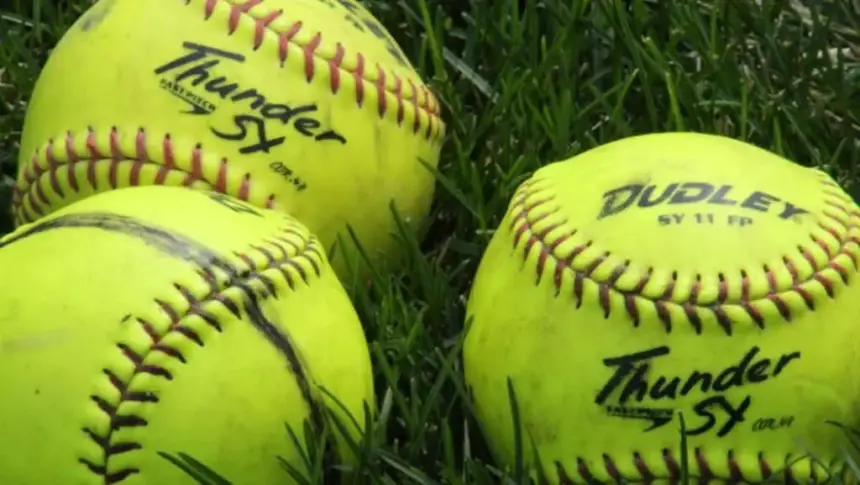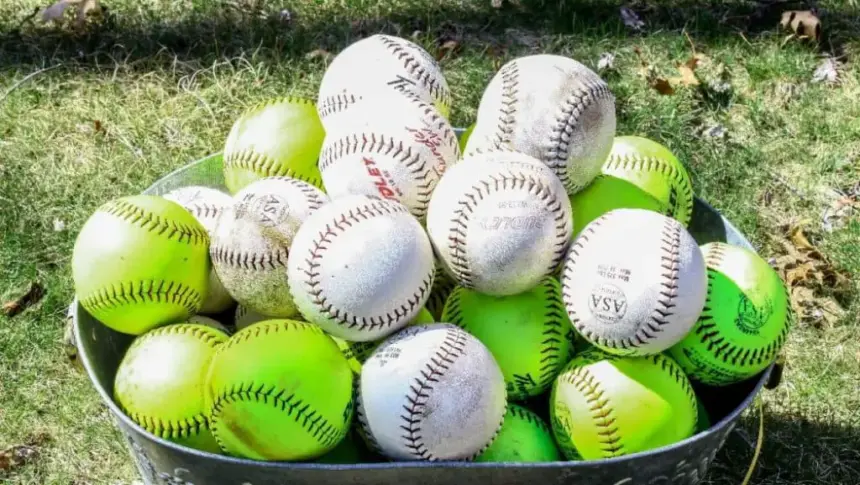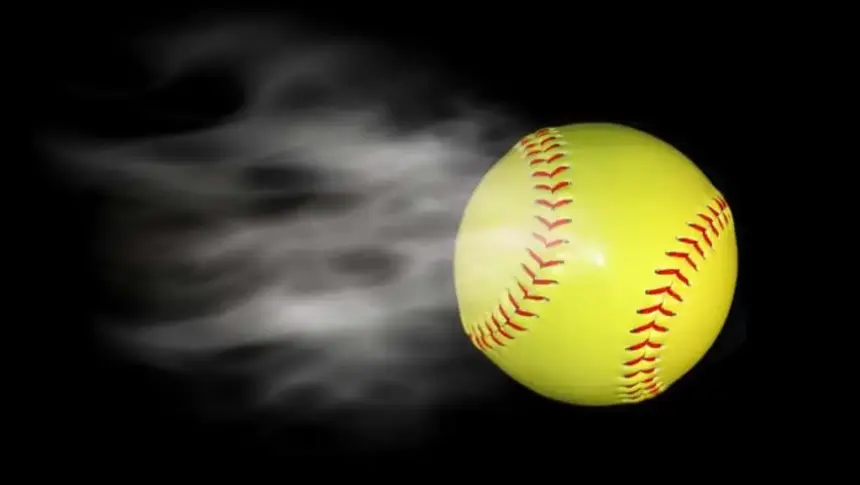Why are Softballs Bigger than Baseballs? (And why are they yellow?)
For many, softball and baseball are difficult to tell apart. And, at first glance, they indeed do have a lot of similarities.
Both sports are played on a 4-base diamond and players score by making runs.
In fact, softball originated in the late 19th century as the indoor version of baseball and a way for baseball players to keep playing during winter.
However, take a closer look and you’ll notice some significant differences.
The first thing that may catch the eye is that balls used in each sport differ in size, with softballs significantly bigger than those used in baseball.
So, why is a softball bigger than a baseball?
There are several reasons for this, most of which have to do with softball’s indoor origins.
Below, I’ll dive into this and other differences between the balls and explain how the bigger ball benefits softball players and makes them safer.
Table of Contents
Why Are Softballs Bigger Than Baseballs?

The indoors origins of softball meant that the distance from pitcher to batter was shorter than in baseball.
In baseball, the ball has to travel 60 feet to reach the batter. In softball, this distance is 15-20 feet shorter.
At the same time, even though it flies slower than baseball, softball still reaches a very respectable speed of 70 mph.
All this means that softball hitters have an extremely short reaction time.
It’s about 0.35 seconds which is 0.1 seconds less than in baseball. If softball used a baseball-sized ball, it would be almost impossible to hit.
Especially considering the rising trajectory of pitches.
So, the main reason why a softball is bigger than a baseball is that its size makes it easier to hit and safer for everyone.
In addition, a bigger ball is heavier and travels less which is important considering the dimensions of a softball field.
Why Are Softballs Yellow?

Another notable difference between baseball and softball is the color of the balls. While baseball almost exclusively uses white balls, in softball, they are bright yellow in most cases.
White softballs are usually reserved for recreational play, and, occasionally, slowpitch softball. The reason why the softball is yellow is pretty much the same as why is it so big.
With the smaller field and shorter distance between the pitcher’s mound and home plate, the batter would have a hard time seeing and tracking the ball if it was white.
The bright yellow color makes the ball more visible and makes the batter’s job easier.
Furthermore, the softball infield is made of dirt, not grass. Or, a combination of sand, clay, and silt, to be more precise.
Against that kind of ground, players will have fewer issues spotting the ball when it features bright and fluorescent colors, such as yellow.
Softball vs Baseball – Size and Weight

As I already mentioned, baseballs are significantly smaller than softballs. The regulation baseball has a circumference of 9 inches.
When it comes to softball, the ball size depends on a variant of the game.
For fastpitch softball, the ball is 11 inches in circumference. Slowpitch softball players use an even bigger ball, measuring 12 inches in circumference.
Occasionally, in the youth leagues, governing bodies will allow the use of a 10-inch ball, so the young players can have better control of it.
Some organizations, especially adult recreational leagues may allow softballs that are not sized to these standards.
They often use even larger specialty balls, with a circumference of 14 or 16 inches. Softballs are also heavier than baseballs.
Standard softball weighs between 6.25 and 7 ounces. On the other hand, a regulation baseball weighs 5-5.25 ounces.
What Ball Is Harder A Softball Or A Baseball?

As its name says, a softball is softer than a baseball.
Originally, during the first softball games in history, players would even use rolled-up boxing gloves instead of a ball.
However, today, the difference is not that big and softballs are much harder than you might think. If you’ve ever been hit by a softball, you know this all too well.
The reason for different levels of hardness between a softball and a baseball lies in the different ways these balls are manufactured.
Also, manufacturers use different materials. Each ball has a center or core, cover, and seams. However, baseball has an extra layer between center and cover – yarn windings.
In addition, every one of these components is made of different materials for each type of ball.
Besides the components, the hardness of the ball is influenced by the way they are formed and compressed.
What Is A Softball Made Of?
Softballs are made of core and cover which are sewn together by stitches. As I mentioned, they lack the midsection made of yarn that baseballs have.
The center, or the core, is made of a synthetic mixture, most commonly made of polyurethane.
Sometimes, manufacturers use kapok, a mixture of cork and rubber. This center gives the ball its bounciness and flexibility.
The materials used for cover vary and can be either natural or not.
The three most widely used materials are leather, synthetic, and rubber. The covering is cemmented or glued to the core.
Stitches or seams that hold the different parts of the covering together can be raised to provide a better grip or run true to the cover.
Flat seams are mostly used in balls intended for the slowpitch softball.
Conclusion
While similar in many ways, balls in softball and baseball do have some important differences. And those differences, even if they may seem insignificant, are a key to how each sport is played.
If the balls weren’t this big, softball would be virtually impossible to play.
Their size is a logical consequence of the smaller size of the field and shorter distance the ball has to fly to reach the hitter.
They make the game more interesting, increase the number of hits, and, maybe most importantly, provide a safe environment for everyone on the field.
Even though softballs are bigger and a bit softer than baseball, they can still cause serious injuries.




